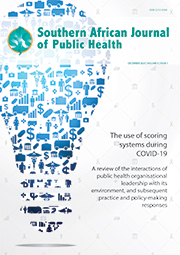Research

Framing cervical cancer messages to improve uptake of screening among young women at a university in Botswana: Implications for practice and policy
Abstract
Although early screening is effective in its prevention, cervical cancer (CC) remains a leading cause of mortality in women. Framing health messages are vital for the uptake of screening for CC. Health-promoting messages can be framed to stress either the gains of engaging in a health behaviour (a gain-framed health message) or the costs of failure to engage in a health behaviour (a loss-framed health message). We assessed intentions to screen after exposure to either a gain- or loss-framed health message in a quasi-experimental design with a sample of 276 young women (mean (standard deviation) age 21.5 (1.91) years). Analyses of covariance were conducted to compare different groups. A total of 198 (71.7%) participants were willing to go for screening before exposure to the message frames (pre-test), which increased to 246 (89.1%) after exposure to the message frames (post-test). Exposure to gain-framed messages increased willingness to screen more than exposure to loss-framed messages, while positive attitudes towards screening increased intentions to screen more than negative attitudes. Interventions to improve health communication, attitudes towards CC and awareness about the aetiology of CC are urgently required, in addition to prioritising screening infrastructure and service capacity to reduce the burden of CC.
Authors' affiliations
G Rabakane, Department of Psychology, Faculty of Social Sciences, University of Botswana, Gaborone, Botswana
M L Leburu, Department of Psychology, Faculty of Social Sciences, University of Botswana, Gaborone, Botswana
K Amone-P'Olak, Department of Psychology, School of Human and Community Development, University of the Witwatersrand, Johannesburg, South Africa
Full Text
Cite this article
Article History
Date published: 2022-01-28
Article Views
Full text views: 763

.jpg)


Comments on this article
*Read our policy for posting comments here